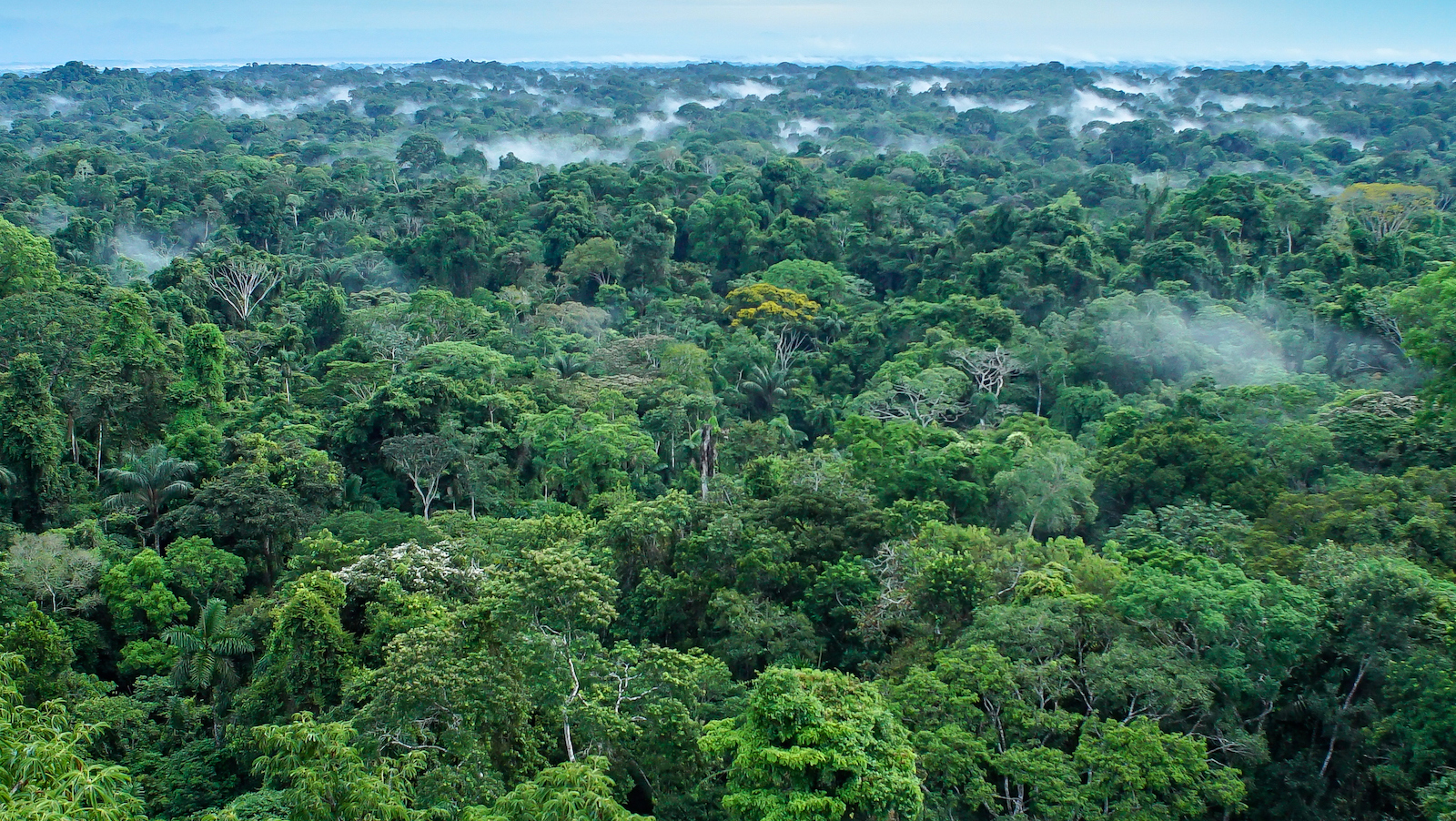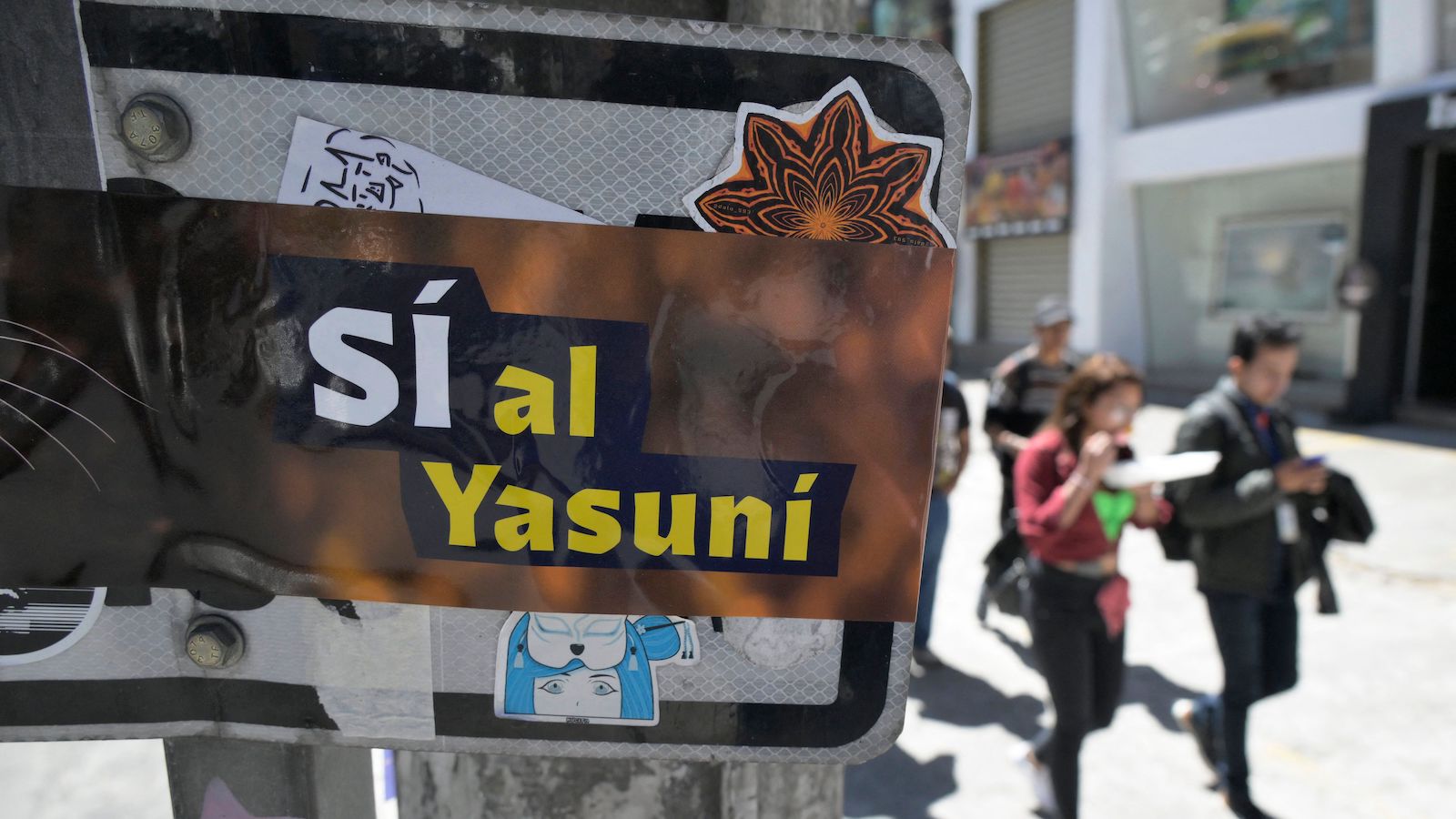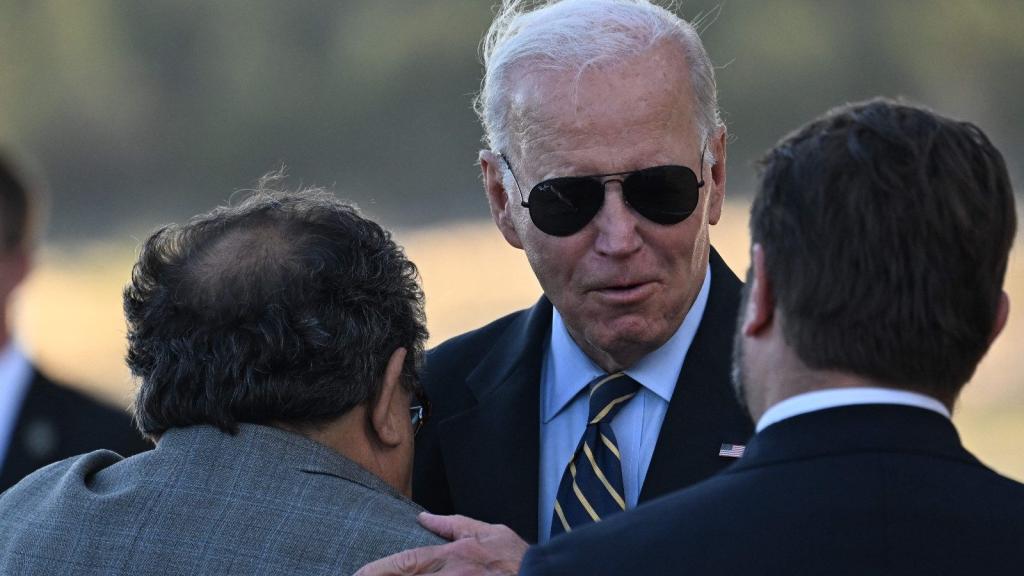This story was produced by Grist, co-published with InfoAmazonia and is part of The Human Cost of Conservation, a Grist series on Indigenous rights and protected areas. Lea esta nota en español.
Albeiro Mendúa was still in elementary school when the blockade began. For 10 days in October of 1998, hundreds of Indigenous A’i Cofán peoples joined together to stop oil workers from entering the community. Outraged by crude oil that had spilled into their streams and rivers, the A’i Cofán demanded the closure of Dureno 1, the well responsible for the contamination, and that Petroecuador — the state petroleum company of Ecuador — leave the area.
“Before the oil companies came, the community always lived in peace and we were all friends,” said Mendúa. “As a child, I went out to play and there was harmony between families and leaders, but that has now changed.”
Over the course of the protest, the Ecuadorian military was called in to monitor the situation. But in the end, the pressure exerted by the A’i Cofán became too much for the company’s management to handle: The government accepted their demands and agreed to temporarily close the well.

In 1969, Texaco drilled the Dureno 1 well inside the territory of the A’i Cofán peoples. But by 1992, the well had changed hands, eventually becoming Petroecuador’s, as did the mineral estate; in Ecuador, Indigenous communities like the A’i Cofán often hold title to land, but the minerals underneath, like oil and gas, and copper or gold, belong to the state.
Since the discovery of oil, the A’i Cofán village of Dureno in the northeastern part of the Ecuadorian Amazon has been threatened by a growing energy industry coupled with explosive population growth, the expansion of agriculture, and intense deforestation. More than two-thirds of the deforestation in the last two decades took place between 1990 and 2000. At the same time, the region’s population grew at a rate of about 5 percent each year.
After the closure of the Dureno 1 well, the A’i Cofáns lived in peace. At the age of 18, Mendúa received a scholarship to attend university in the city of Cuenca, 432 miles away. He graduated in 2010, with a degree in Educational Sciences and Research in Amazonian Cultures. His next goal: take what he learned back home in defense of his community.
When he came home, he noticed a change. Petroecuador had returned, and this time, they had a new tactic: offer incentives to the community, divide, and drill. When it came to economic development or the protection of lands, families had begun fighting and friends were in conflict.
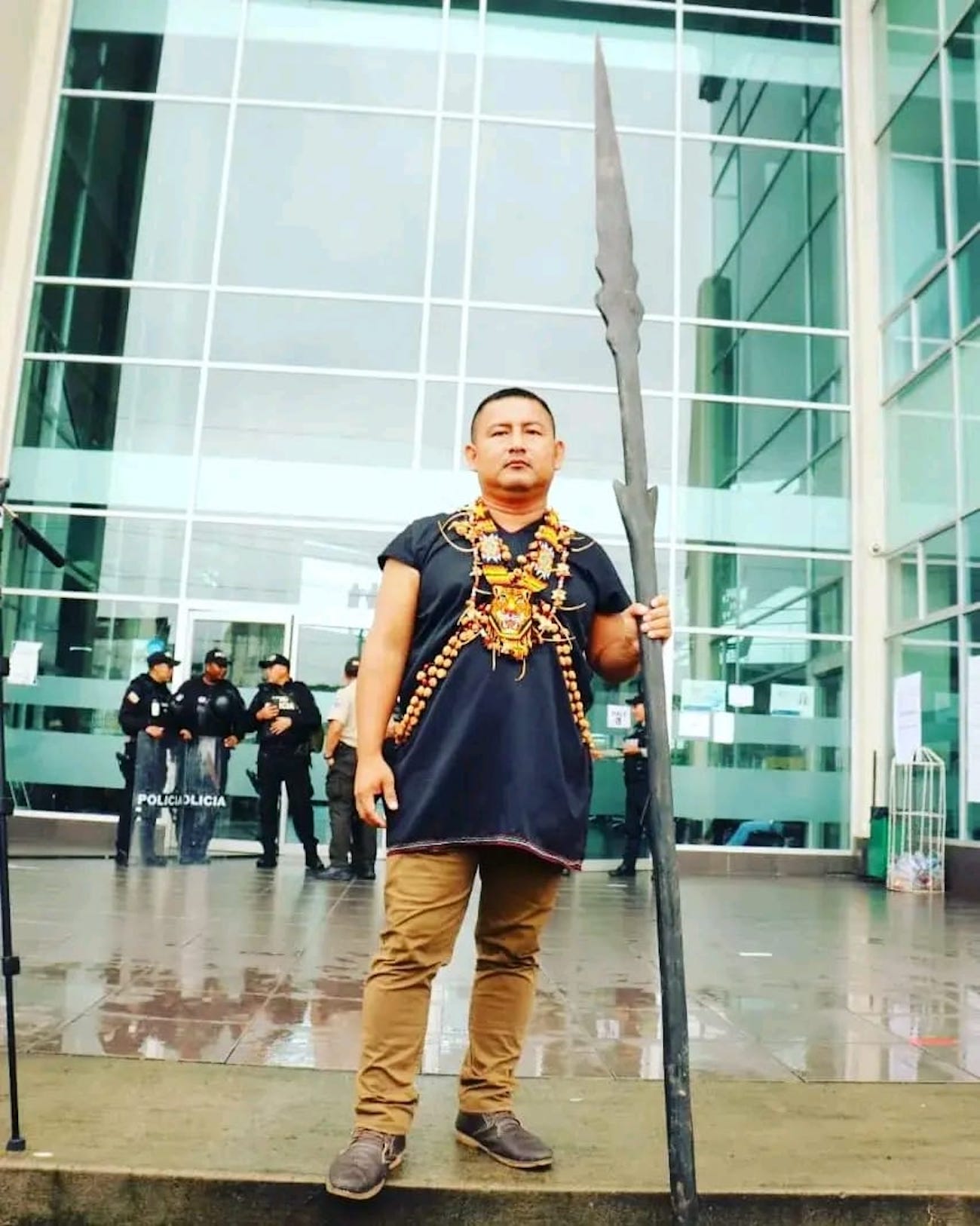
At that time, his community survived by hunting, fishing, and collecting fruits, and Mendúa worked to develop projects that would protect their way of life, and their rights. For some time, Mendúa was vice president of the Confederation of Indigenous Nationalities of the Ecuadorian Amazon, an Indigenous organization that represents nearly 1,500 communities across the Amazon, and now leads the Fundación Hijos de la Selva, or Children of the Rainforest Foundation, an environmental organization focused on Indigenous rights.
“We continue to fight and resist,” Mendúa said. “But the leaders must be vigilant, and we need to defend ourselves.”
The A’i Cofán peoples hold legal title to more than 1,500 square miles of land across five sovereign territories in Ecuador’s northeast, along the Aguarico and San Miguel rivers, that contain dense tropical rainforests rich with plants and animals. Along the Aguarico, which begins in the Andes Mountains and runs 230 miles, narrow channels and lagoons provide homes to dolphins, manatees, and caimans.
In 2008, Ecuador’s Ministry of Environment, Water and Ecological Transition, also known by the acronym MAE, approached the A’i Cofán with a proposal to protect their homelands by paying residents to guard their forests.


At first, many residents rejected the idea, fearing it was a ploy by the Ecuadorian government to obtain control of their territory. However, after trying multiple times to court the A’i Cofán and meeting with community members during open assemblies, the A’i Cofán decided unanimously to sign an agreement with MAE, and in 2008, they did just that, joining a national program called Socio Bosque, a cornerstone initiative behind the government’s promise to develop incentives that protect nature and ecosystems from development.
“The decision was made together, with the participation of young people, elders, women, experts, and leaders,” Mendúa said. “We started with 27 square miles of conservation area, and it was there that we raised our guard. We worked hard on the recovery of flora and fauna, and the community respected the terms.”
Today, the Dureno region is one of 222 Socio Bosque sites throughout Ecuador, consisting of nearly 6,330 square miles of protected land of which almost 5,605 square miles belong to Indigenous communities and other collective landowners. In Dureno, the A’i Cofán receive about $54,000 each year through Socio Bosque, and the money is used to train forest guards, improve surveillance strategies, and protect the territory from illegal miners and other threats.

“The A’i Cofán have always been caretakers of the forests without receiving anything in return,” said Medardo Ortiz, who is also a member and former treasurer of the A’i Cofán community in Dureno. He says the agreement allowed them “to obtain economic resources and cover the needs of families.”
Forests inside A’i Cofán territory are some of the last remaining areas of pristine forest in the Ecuadorian Amazon, covering nearly 7,000 square miles. Through the Socio Bosque program, about 800 community members receive payment, collectively, each year to protect 30 square miles of land from logging and agricultural land grabs while preserving the land. The money is a windfall in a region where 54.45 percent of the population lives under the poverty line — and the program works. By 2025, the program aims to protect 7,000 square miles of forest across Ecuador.
“In general, deforestation rates in the northern Ecuadorian Amazon have remained relatively unchanged or even decreased in some areas since the early 2000s,” said Santiago Lopez, an associate professor of geography and the environment at the University of Washington, Bothell. “Socio Bosque is a very helpful program that has allowed individuals and communities to financially benefit from preserving their forests.”
But the expansion of energy development in and around Dureno, again, threatens to undermine the Socio Bosque project, potentially upending decades of conservation efforts and imperiling millions of dollars in international funding tied directly to the state’s protected area program.
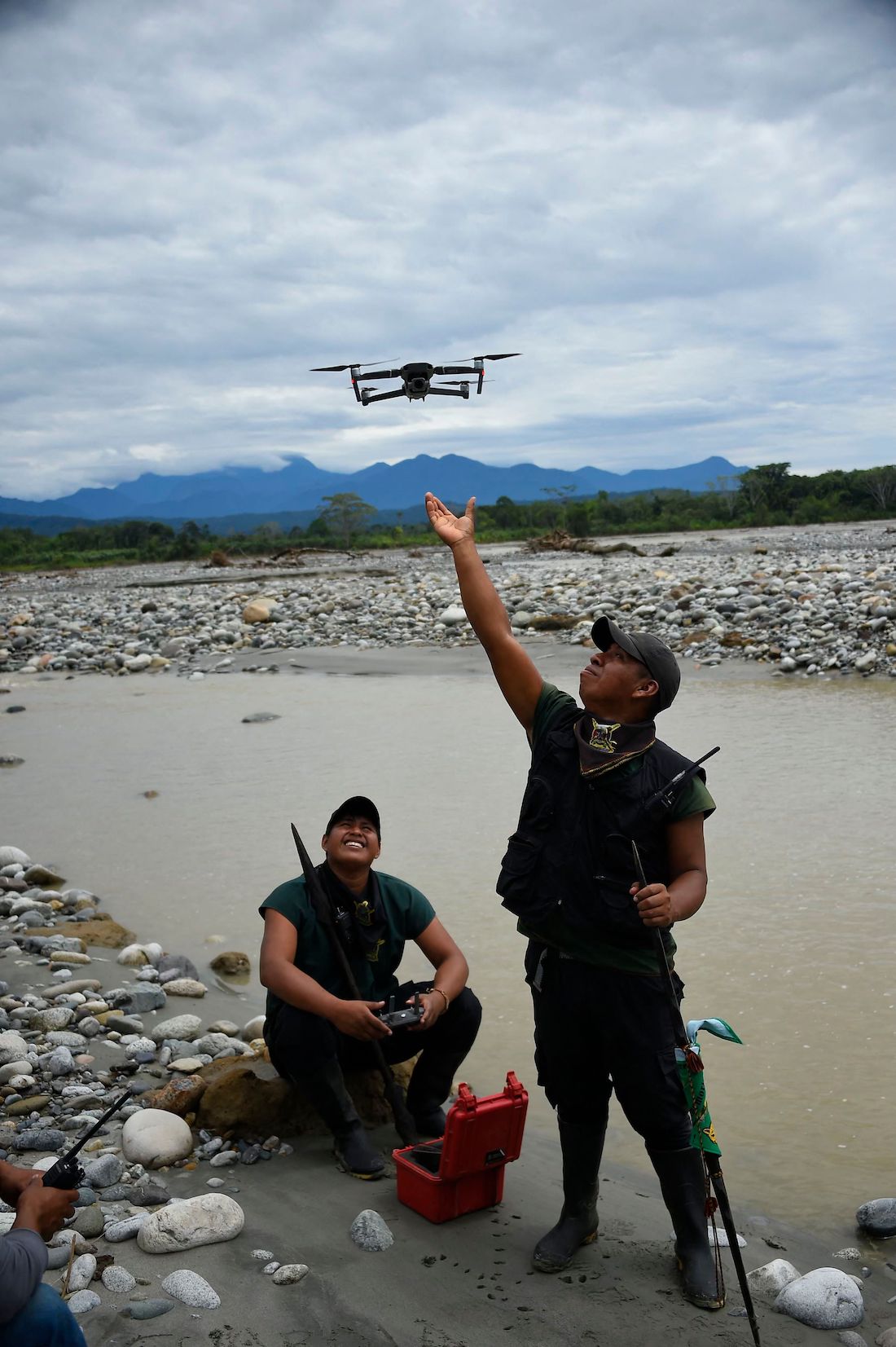
Since 2012, Petroecuador has drilled 70 new oil wells across 155 square miles of rainforest near Dureno, creating the largest oil field in the country and increasing production by approximately 75,000 barrels per day. And in 2017, the Ecuadorian government announced plans to expand drilling.
Last year, Ecuador produced approximately 482,000 barrels of oil a day, most of which was sourced from the Amazon region. More than 60 percent of the Ecuadorian Amazon is under oil concession, with almost 28,000 square miles of oil blocks in operation. By 2025, production is expected to ramp up to 756,000 barrels per day.
Near Dureno, nearly 70 oil wells drilled before and after 2012 ring the Socio Bosque protected area, and two are producing oil inside the established boundaries. Frequent oil spills from those wells pollute the lands and waters that are connected to Socio Bosque, contaminating waterways and inflicting serious loss and damage on the region’s biodiversity, threatening its last undeveloped forests. Between 2012 and 2022, an estimated 969 cases of oil damage were reported on 51 different Indigenous lands across the country.
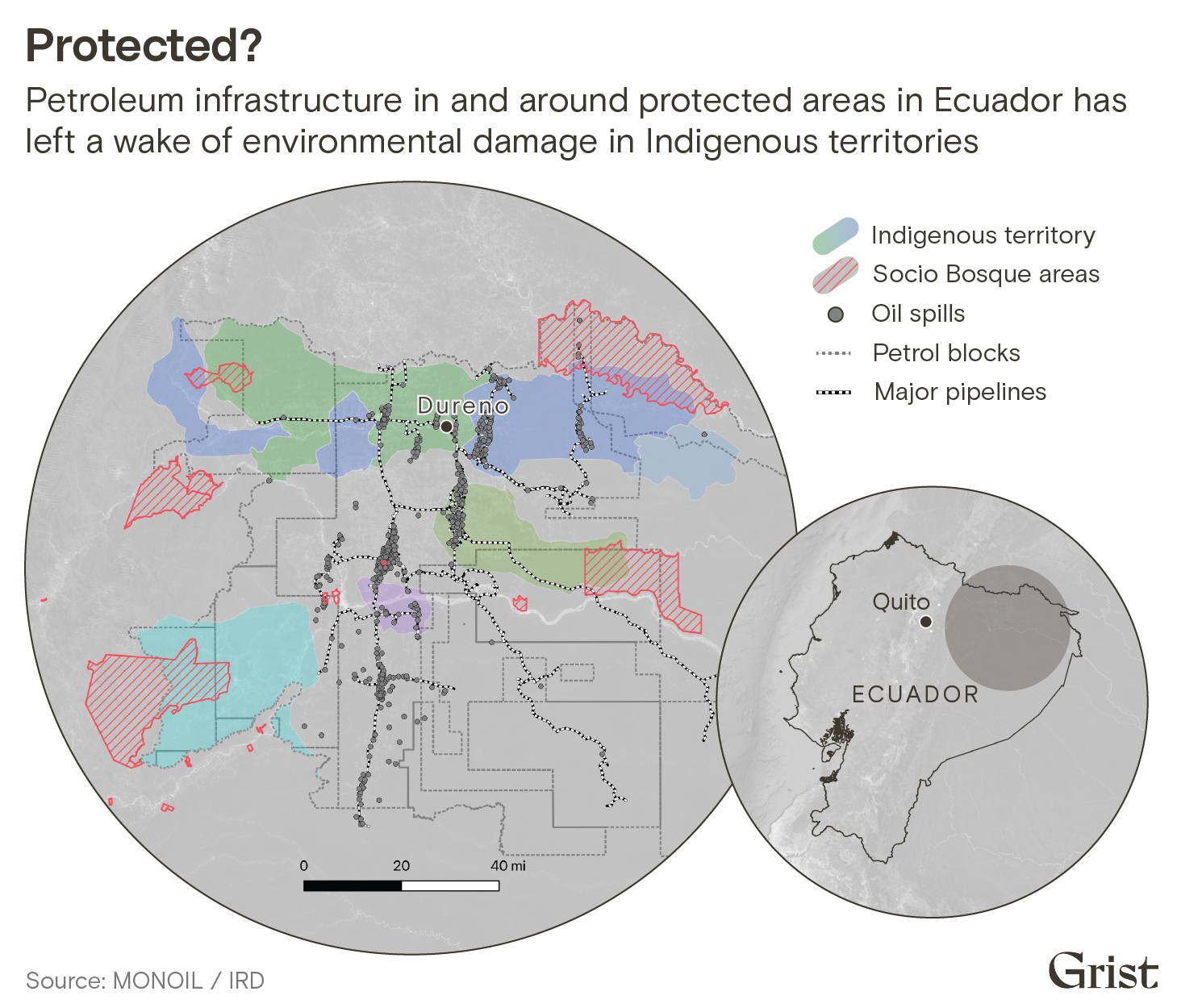
“All the waste and pollution from that field goes into the rivers that cross the community,” said Alexandra Almeida, coordinator of oil affairs at Acción Ecológica, an environmental advocacy organization based in Quito, Ecuador. “A’i Cofán people in Dureno are very affected. They can no longer hunt or fish. It is really tragic.”
More broadly, a total of 68 oil wells are located within protected areas governed by Socio Bosque agreements, or within 31 miles of protected borders, while three oil fields owned by the state overlap Socio Bosque lands. One field, the Shushufindi block, produced nearly 12 percent of the country’s total crude oil production in 2022.
As oil exploration begins to eat into Ecuador’s forests, Socio Bosque provides a window into just how protected areas actually are when faced with the lure of oil and gas profit.
“I think it has good intentions,” said Kevin Koenig, the climate, energy and extractive industry director at Amazon Watch. “There’s a whole bunch of questions around if the program is really achieving what it is supposed to achieve.”

In 2008, the Shuar Arutam peoples became the first community to contract with Socio Bosque. With homelands between the Santiago, Zamora, and Kuankus rivers in the southeastern region of Ecuador, the agreement covered nearly 800 square miles of land and supported almost 100,000 people in 27 Shuar communities.
The Shuar received an annual income of $452,000, which was used to conserve forests, improve community finances, and build educational facilities for their children. But despite signing contracts with the government, in 2019, Ecuadorian officials granted several mining concessions to Canadian, Chinese, and Australian companies within the established protected areas.
“Families who had never benefited from public institutions of the state were given resources for education, health, productive development,” said Jaime Palomino, president of the Shuar Arutam community. “The idea was good, but the Ministry of Environment, Water and Ecological Transition took advantage of this opportunity to distract us and continue advancing with the permits for mining concessions, which was not the vision of our people.”
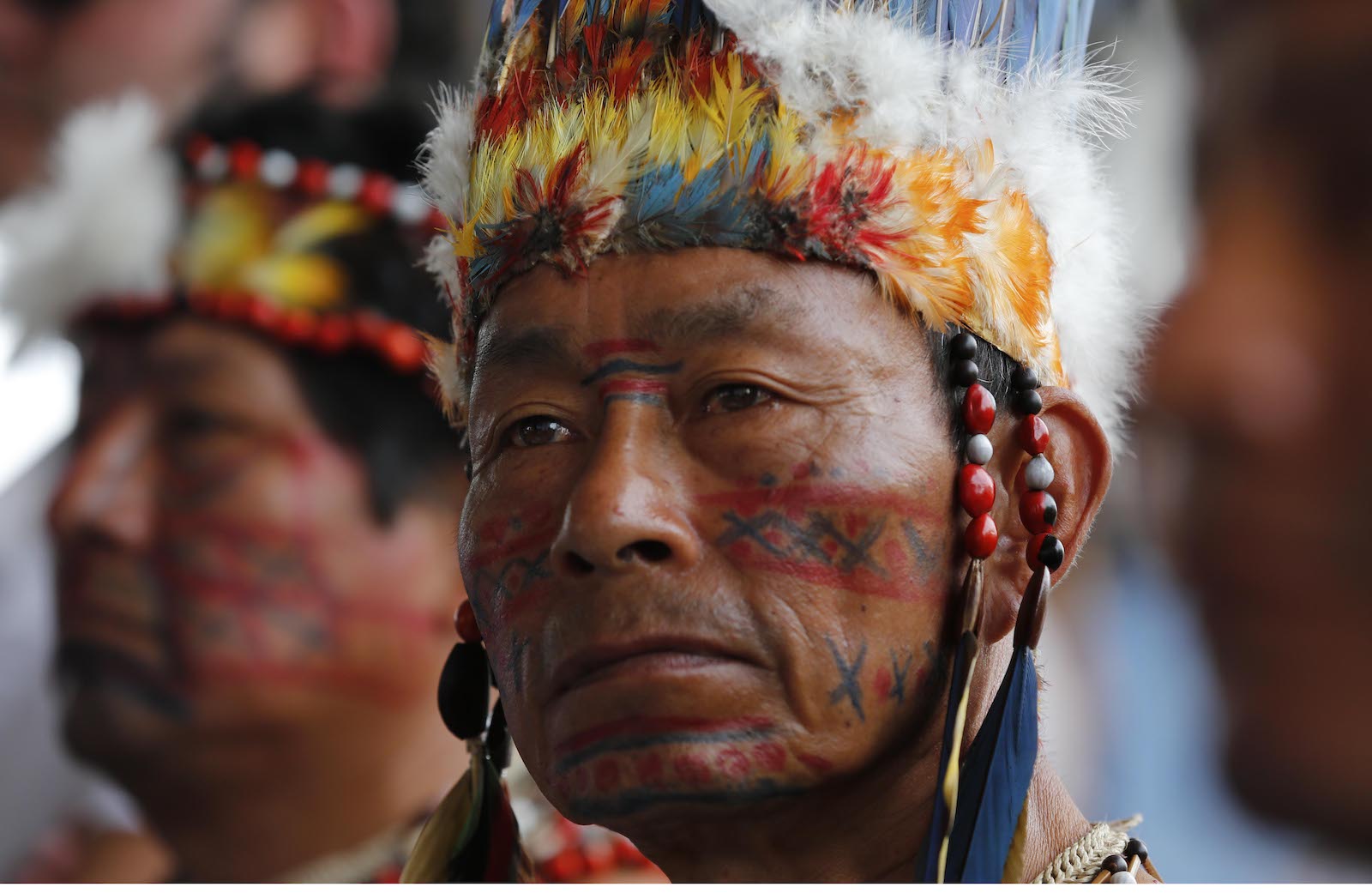
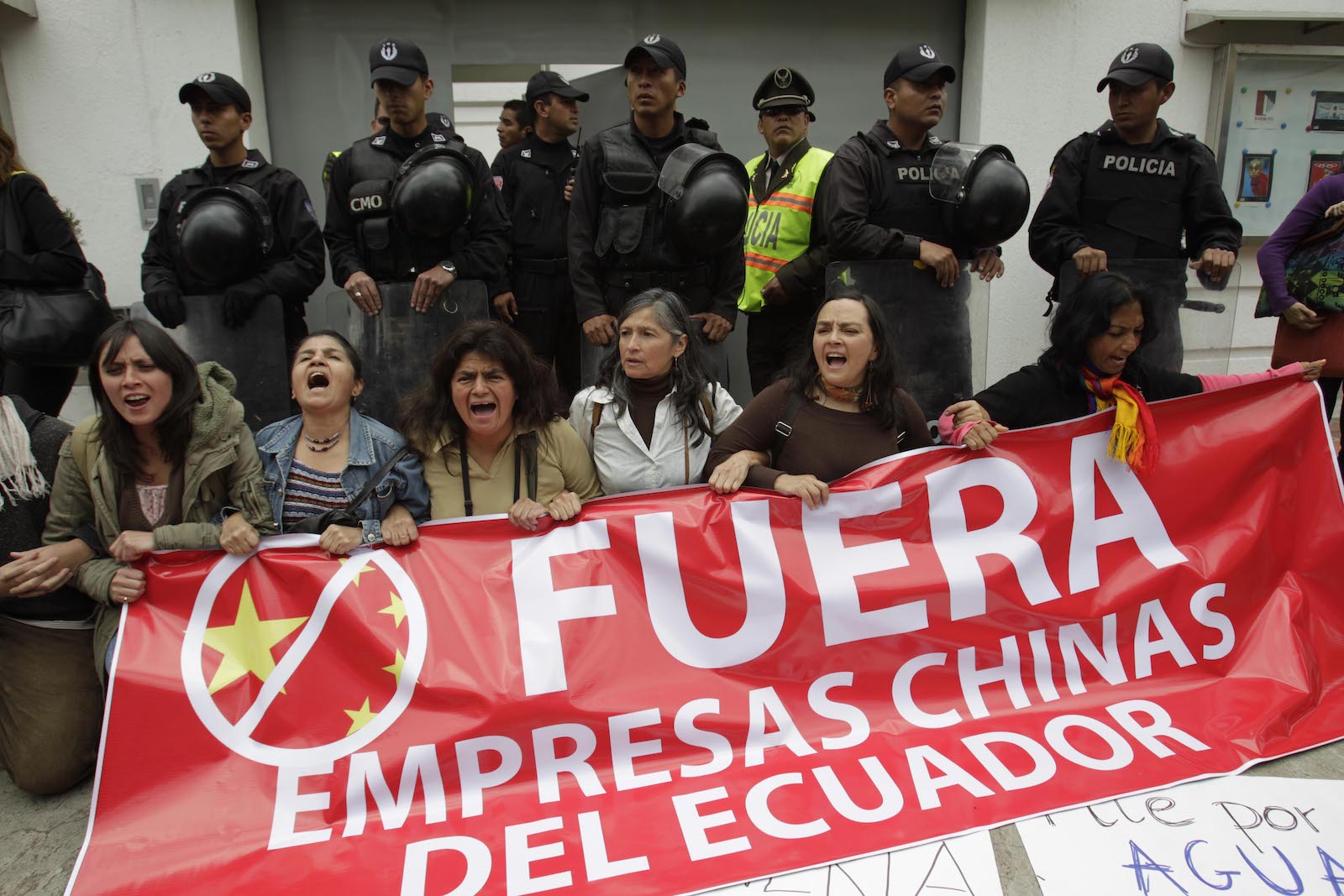
Throughout 2020, former President Josefina Tunki and other campaigners presented a series of demands to the Ecuadorian government, with the main goal of getting the contracts withdrawn. In response, they were subjected to threats and harassment by the mining companies and the state.
In 2020, Ecuadorian authorities carried out violent raids in the community. That same year, Josefina Tunki, who gained prominence as a key leader in the community’s resistance, received death threats from the vice president of the Canada-based mining company Solaris Resources, Federico Velásquez, who reportedly told her, “If you keep bothering me with national and international complaints, we will have to cut someone’s throat.”
As a result of the state granting concessions inside areas governed by Socio Bosque contracts, the MAE has terminated its contract with the Shuar Arutam peoples, claiming that the community failed to comply with the program’s requirements. According to a report issued by Amazon Watch on Socio Bosque, researchers called implementation “rife with irregularities and inconsistencies.”
“The government failed to provide support for proper implementation of the agreement and still allowed mining companies into [the Shuar Arutam peoples’] territory,” said the report. “The termination of the program has created even more economic difficulties for the [Shuar Arutam peoples], creating divisions among communities and families that could drive them into the arms of mining companies — a perverse outcome of a program aimed at forest protection.”
Torsten Krause, a senior lecturer in sustainability science at Lund University Centre for Sustainability Studies, has researched the conservation benefits of the Socio Bosque program.
“People were confused, because the state was coming in and asking them to join this conservation scheme for 20 years and then the same state, only a week later, came back and said they were looking to open a mine or auction the licensing rights for oil drilling there,” Krause said. “They were like, ‘Wait a second, you want us to sign this contract, but then you are also going to approve oil concessions?’ That’s confusing.”
Each Socio Bosque contract lasts 20 years, and the MAE pays landowners to protect their territory. To ensure compliance, the Quito-based Socio Bosque central office monitors each site using remote sensors and semi-annual field visits. Each time communities violate the terms of their contract, a payment is lost. If the violation is caused by someone outside the community — like an illegal logger, for instance — beneficiaries must report the incident to the central office within five days or lose a payment. After three consecutive violations, Socio Bosque can terminate the contract and force landowners to pay back a percentage of the payments received since the beginning of the contract.
In cases where landowners fail to meet their contractual obligations because of state-sponsored projects, communities are still required to pay.
“We acknowledge that there are still challenges to be addressed,” said Luis Suarez, the vice president of Conservation International in Ecuador. “We trust that through coordinated efforts among the government, civil society organizations, and international technical cooperation, these concerns can be addressed while respecting the rights of local communities and conserving nature.”
Socio Bosque areas are considered protected under the National System of Protected Areas of Ecuador and form part of the country’s national REDD+ scheme — a voluntary, international climate change mitigation program developed by the United Nations Framework Convention on Climate Change aimed at reducing deforestation and forest degradation by paying communities to stop development and conserve ecosystems. The goal is to incentivize conservation, improve living conditions of communities engaged in the work, and reduce greenhouse gas emissions on approximately 52 million square miles of forest areas in 60 countries.
Indigenous and civil society organizations often reject programs that provide payments for ecosystem services, also known as PES, which provide landowners and communities monetary transfers to improve conservation outcomes, as is the case with the U.N. REDD+ program, because they say it is “not a real solution to confront climate change.”
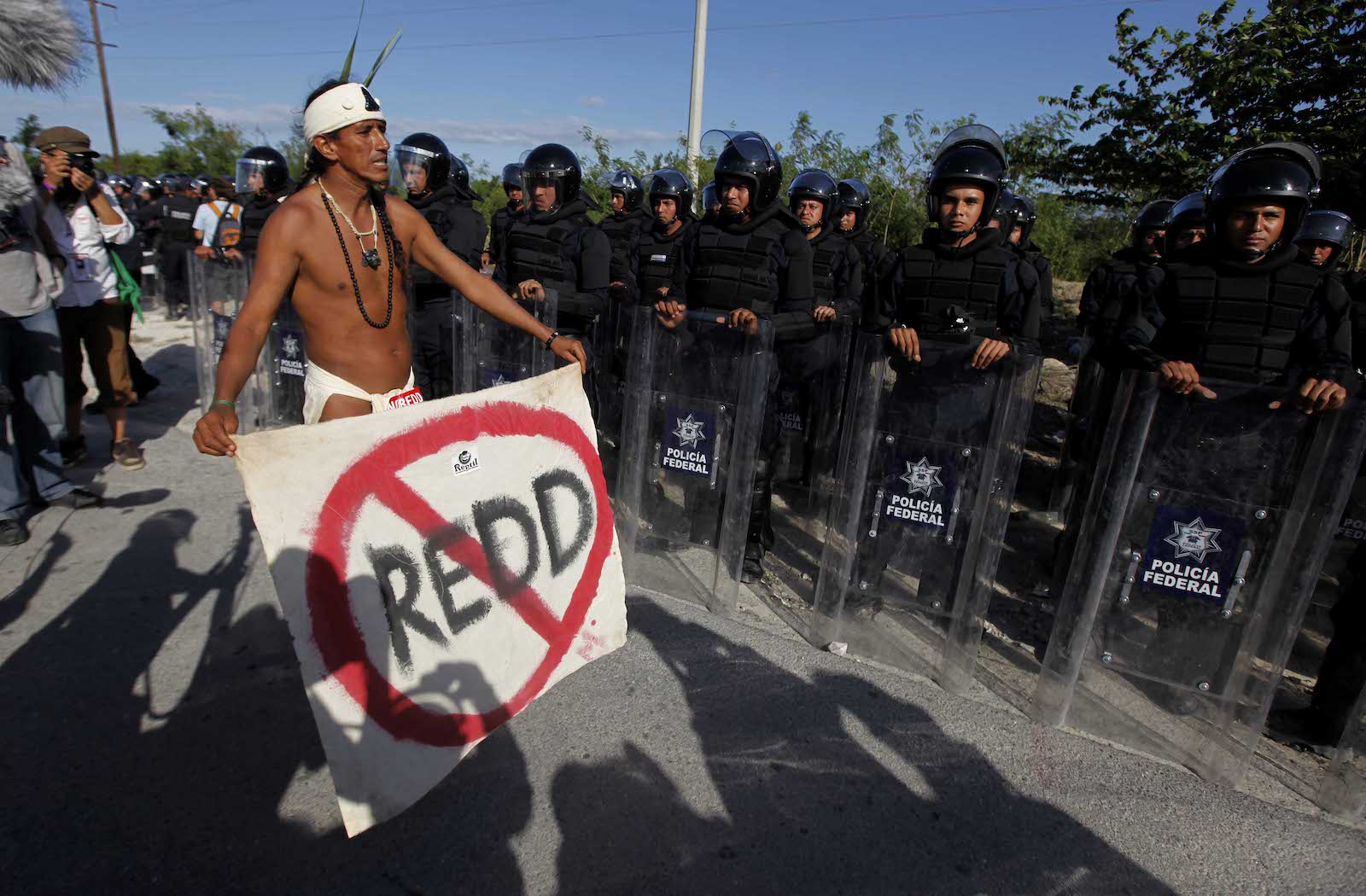
Eduardo Verdugo / AP Photo
A recent study from the Berkeley Carbon Trading Project into the main methodologies used by REDD+ found that project managers often “stretch reality and create a vast quantity of carbon credits for projects that have questionable climate impacts.” Their findings raise doubts about the effectiveness and credibility of REDD+ projects, with experts calling for more transparent carbon accounting and greater safeguards for Indigenous communities.
In Ecuador, the Socio Bosque program also has its critics. Instead of protecting land for conservation, the Confederation of Indigenous Nationalities of Ecuador, or CONAIE, and the Confederation of Indigenous Nationalities of the Ecuadorian Amazon, or CONFENIAE, argue Socio Bosque is a threat to Indigenous lands, traditions, and identities. For them, the program fails to address the true drivers of climate change, such as the extraction and burning of fossil fuels, agribusiness, and deforestation, which threaten the environment and their livelihoods.
In a letter addressed to the Secretary General of the U.N. in 2011, CONAIE said: “We oppose the policies that are being developed in Ecuador, such as the Socio Bosque plan, as well as the new environmental regulations that aim to commercialize our forests, water, and biodiversity. And we similarly reject private initiatives to grab land and sell environmental services.” To combat climate change, policies must respect the rights of Indigenous peoples and stop the expansion of oil and agribusiness, they argued.
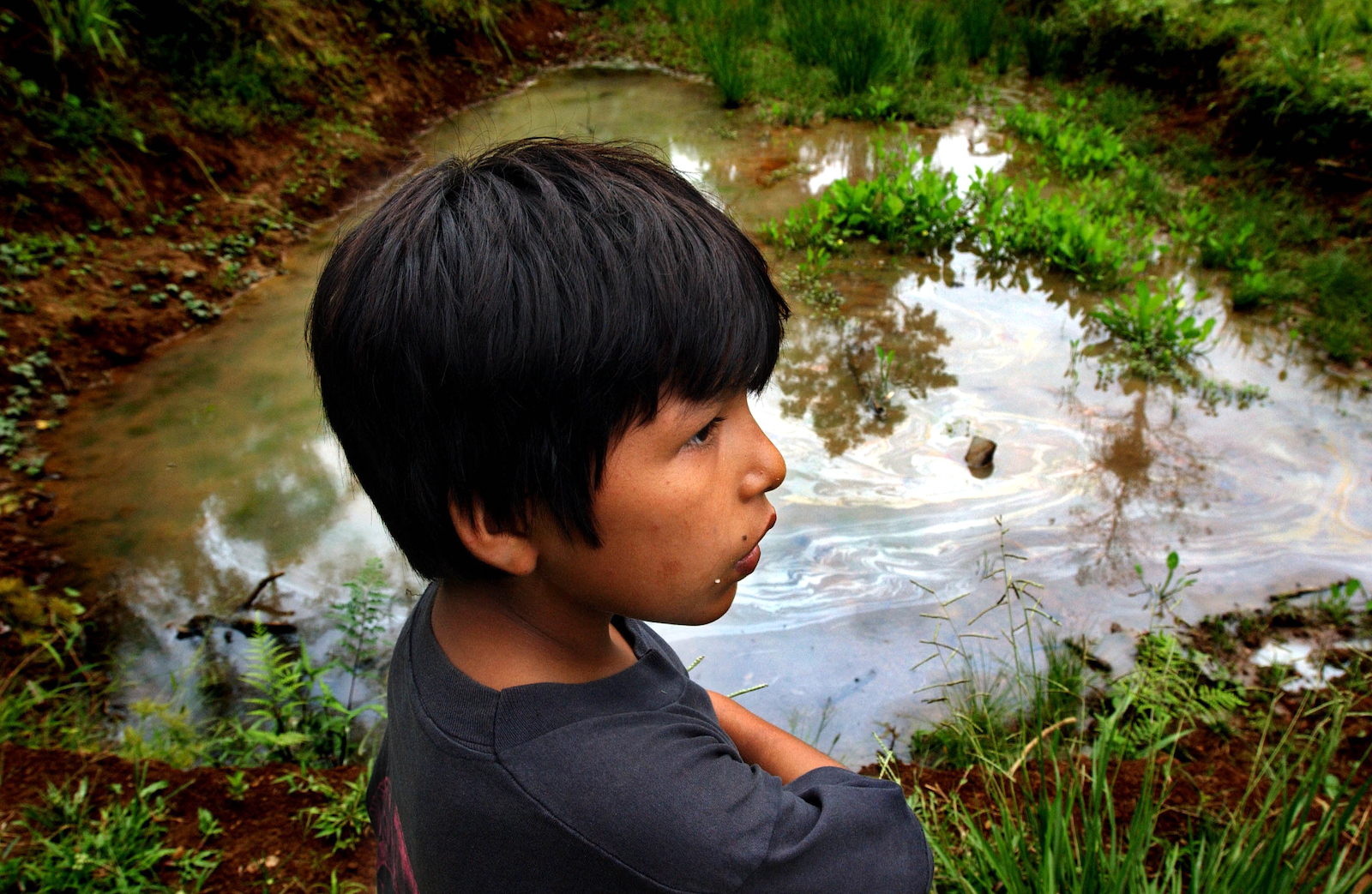
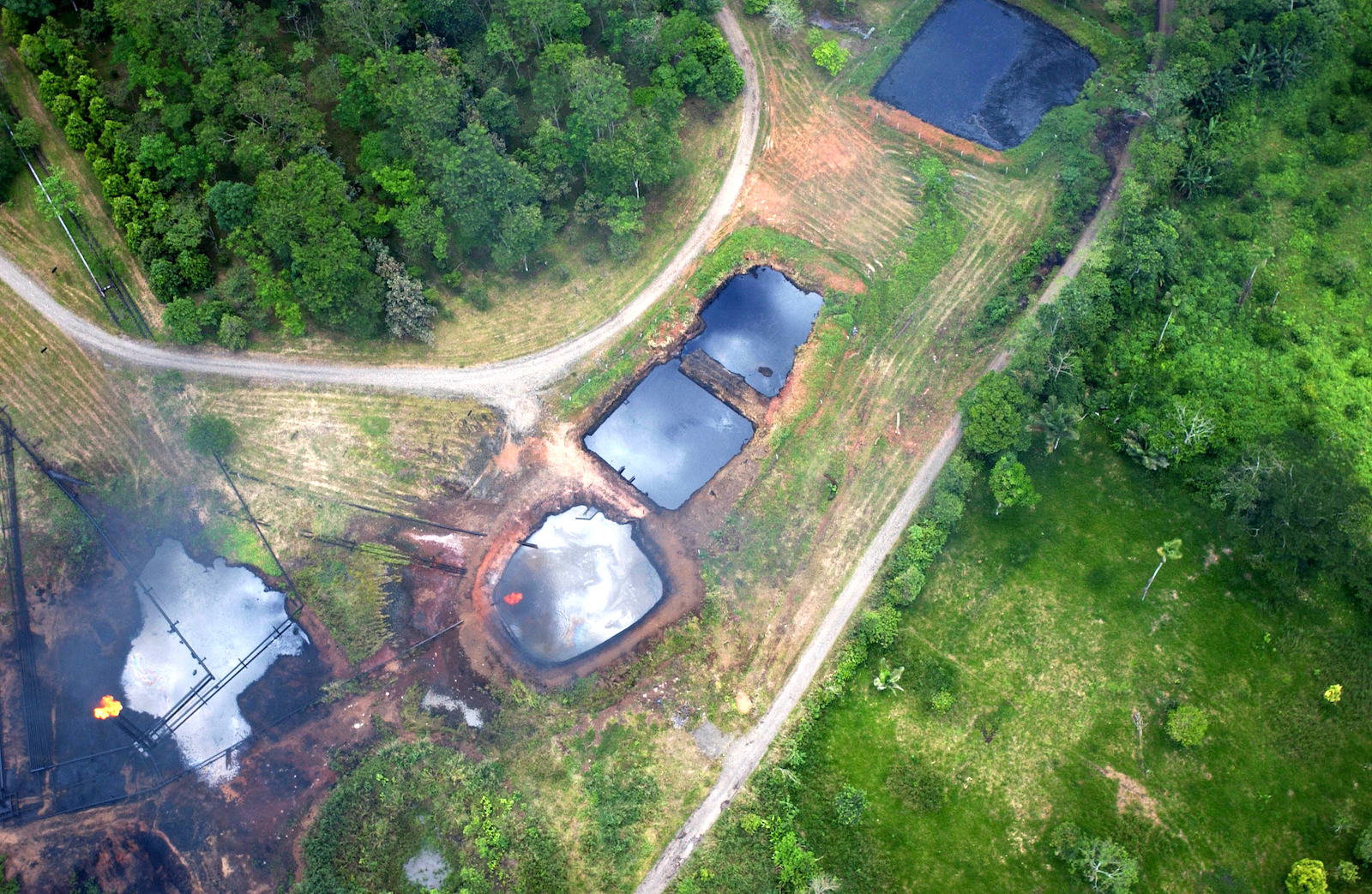
More than $50 million has been invested in the Socio Bosque program since the project began. Most of the money comes from Ecuador but is supplemented by international institutions and private donors.
In 2014, Banco del Pacífico, a private sector bank based in Ecuador, signed a three-year contract with Socio Bosque to provide $8,635 a year toward conserving and restoring Ecuador’s ecosystems. That same year, General Motors signed a five-year contract, in which they promised to transfer $23 per 2.4 acres of protected area each year. But the program’s largest donor by far is KfW, a German state-owned investment and development bank, which signed a contract with Ecuador in June 2010 and has provided the program a total of $29.4 million.
“The existing legal framework of Ecuador creates the possibility that mining areas overlap with Socio Bosque areas, which in our view is definitively not ideal,” a representative of KfW said. “We consider the Socio Bosque program an overall success story in tropical forest protection. However, we surely also continue to carefully regard any upcoming changes, unintended impacts, or technical flaws of the program prior to any additional financing.”
Then there’s the details. When Petroecuador wants to drill for oil on a new site, they must obtain an environmental license. To do so, they have to get an intersection certificate from the MAE proving that the proposed drilling area doesn’t overlap with a nationally protected area. Under the National System of Protected Areas of Ecuador, Socio Bosque areas are protected, but Petroecuador denies this. “Our environmental licenses do not require intersection certificates for private areas within the Socio Bosque program,” said a representative of the company, adding that “Socio Bosque is not a protected area.”
According to Verónica Andrade Estrada, Socio Bosque’s technical director, in areas where concessions are granted by the Ecuadorian government for oil and gas development, “these areas are removed from the conservation polygon, since within the properties under conservation it is not possible to carry out extractive industries,” she said.
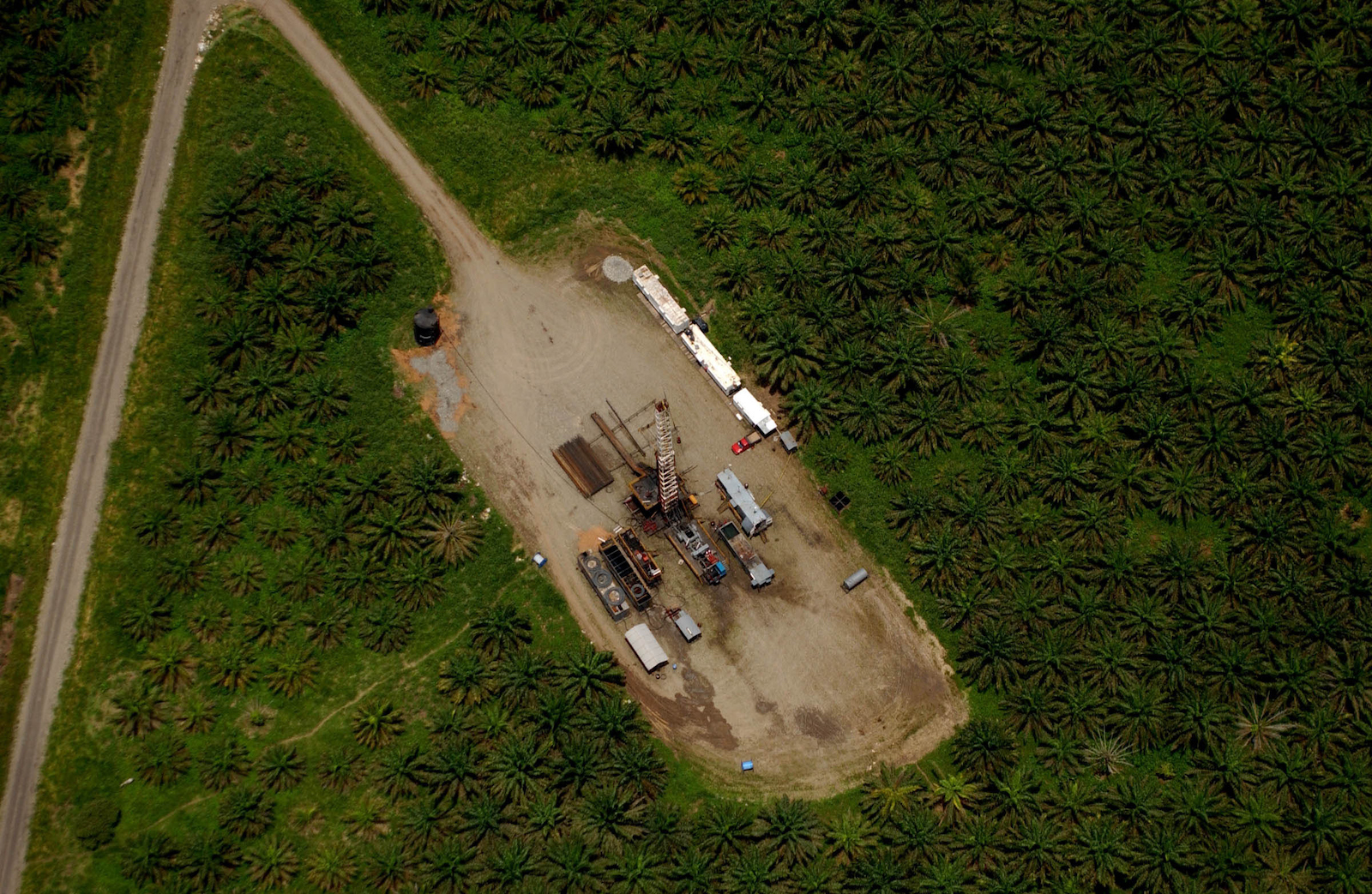
“According to our understanding of the legal framework, a breach of the agreement due to, for example, government-sponsored activities does not result in a partner being in breach of contract, and therefore the partner does not have to repay the incentive,” said a representative of KfW. “In this case, a mutually agreed termination of the agreement should be reached.”
Representatives with Socio Bosque did not respond to requests for clarification or detailed questions about communities needing to pay the state for its development activities in contractually protected areas.
While Socio Bosque channels $7.9 million in investments per year into the environment, that income pales in comparison to oil profits: In the first three months of 2023, the Ecuadorian government received $1.5 billion in income from Petroecuador’s oil exports.
“In order to maintain a harmonious coexistence with projects that are implemented to benefit the development of the country, Socio Bosque carries out a thorough review of the environmental management plans that are presented prior to the licensing of projects that overlap with Socio Bosque areas,” said the Ministry of Environment, Water and Ecological Transition. In those cases, they establish “specific preventive, mitigating, and compensatory measures” and, “if the state prioritizes resource extraction, the area is removed from the conservation scheme.”
In 2021, when Guillermo Lasso, the nation’s outgoing president, came to power, he announced that he wanted to “extract every last drop of benefit from our oil” in Ecuador. In 2022, his administration began negotiating with Silverio Criollo, former A’i Cofán president of Dureno, for more oil wells inside the Socio Bosque borders — a negotiation that ignited divisions within the community.
“It was a huge blow,” Albeiro Mendúa said. “We complained to the government and said that we had an agreement signed and that they should respect it.”
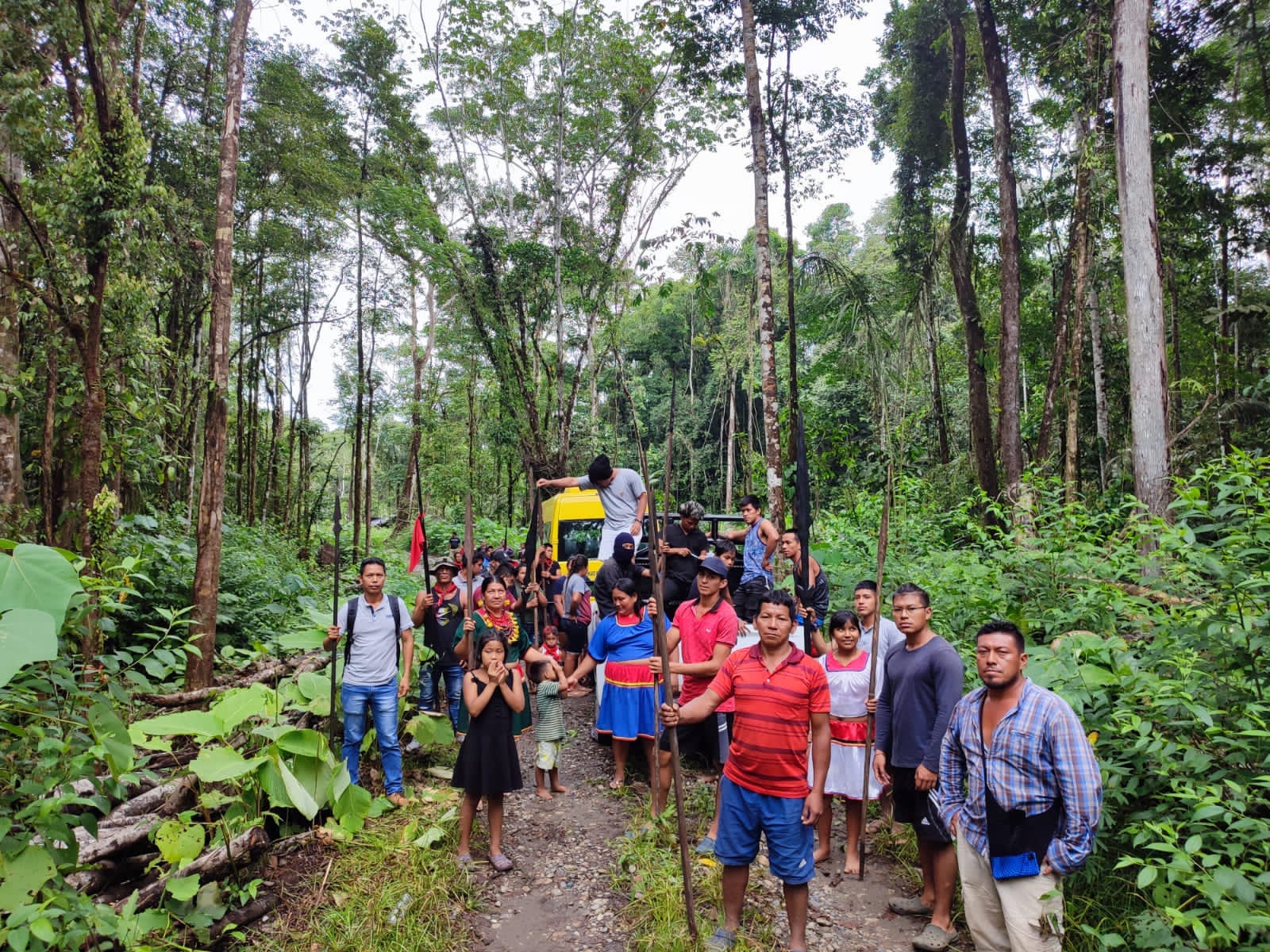
Just months after meeting with Criollo, the Ecuadorian government authorized the construction of 30 new oil wells by Petroecuador, and by June of 2022, the A’i Cofán had again constructed a blockade to prevent oil workers from entering the community. The standoff lasted until January 12, 2023, when members of Ecuador’s Armed Forces and the National Police tried to evict them, resulting in a violent confrontation that left six people seriously injured.
Then, on February 26, Mendúa’s brother, Eduardo, one of the most prominent faces in the community’s resistance to Petroecuador and then-president Criollo, was assassinated outside his home in his garden.
CONAIE, and other nongovernmental organizations, along with Mendúa’s family members, have accused Petroecuador of being responsible for the attack. Petroecuador denies the allegations and adds that the company has “been in constant conversations with the communities, and the A’i Cofán are fully informed about the intervention of the oil company in their territory,” said Petroecuador’s deputy manager María Soledispa.
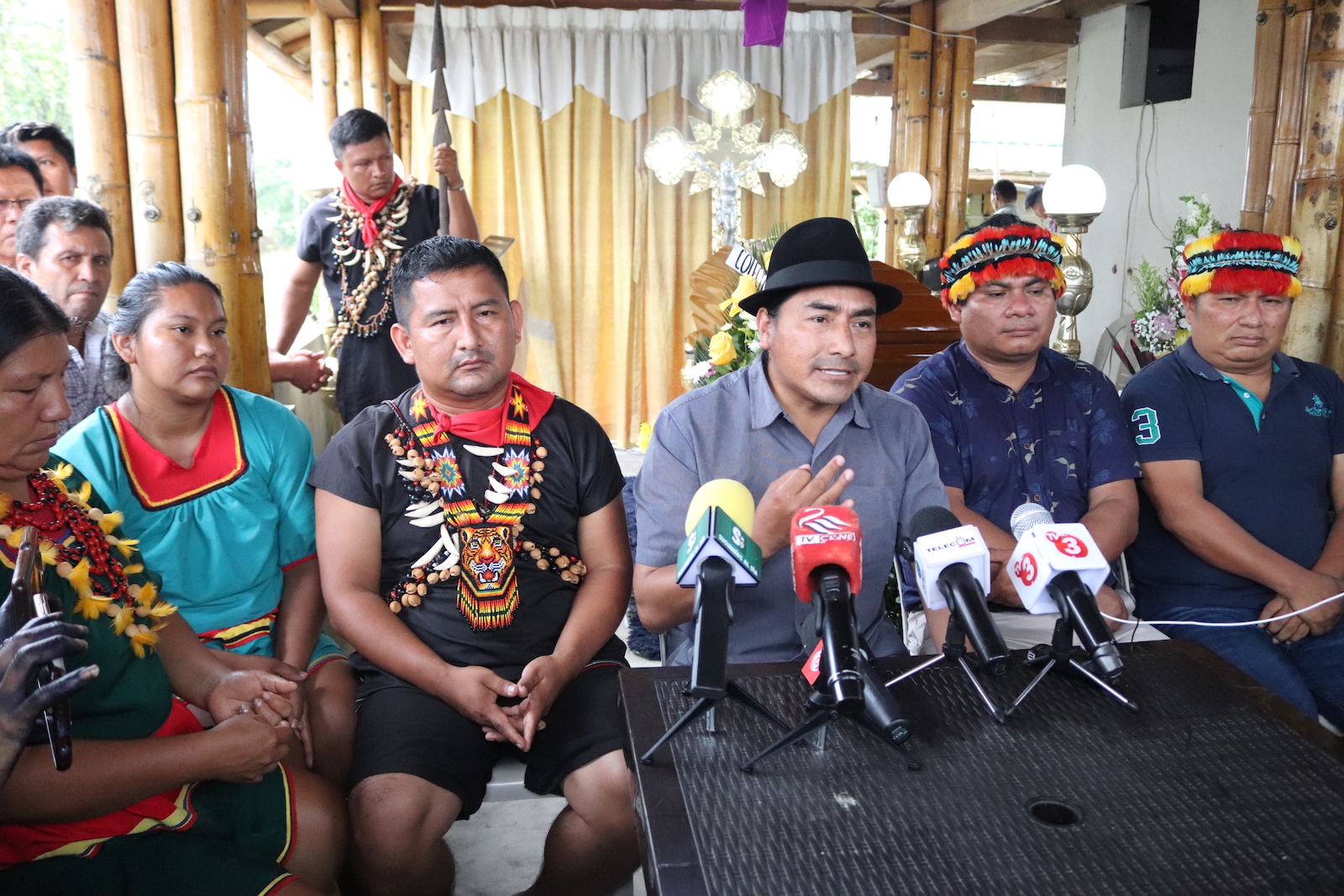
“Dureno has become a conflict zone,” Mendúa said. “I have had to leave the community to live somewhere else for my personal safety.”
Mendúa now spends his days in exile from Dureno, campaigning against oil operations from a distance. Living at home, he says, comes with constant death threats from oil workers and community members in favor of oil exploration, and the murder of his brother makes for a reminder of how real those threats are.
In August, 60 percent of Ecuadorians voted to free Yasuní National Park, a 3,948-square-mile protected area and home to many uncontacted Indigenous communities, from oil exploration in a historic referendum. The outcome, which will require Petroecuador to leave over 726 million barrels of oil underground, was hailed as a victory by environmental advocates across the globe.
“It shows us that the greatest national consensus at this time is in the defense of nature, the defense of Indigenous peoples and nationalities, the defense of life,” said Pedro Bermo, a spokesperson for the environmental collective Yasunidos, in a statement.


But Mendúa feels less hopeful about the results. He says communities in territories outside of Yasuní aren’t safe. “We are sure, or at least I am, that the government will try to enter with force.”
Mendúa says he is now working to come up with alternative projects the community can undertake to protect their homes and keep oil companies away. He and others are fighting for the legal right to manage more of their historical and ancestral territories, which they believe would strengthen the survival of the Cofán peoples and represent a huge victory for conservation.
“We have the capacity to manage and defend these territories,” Mendúa said. “Our fight is not just for the Cofáns — we are also fighting against climate change.”
